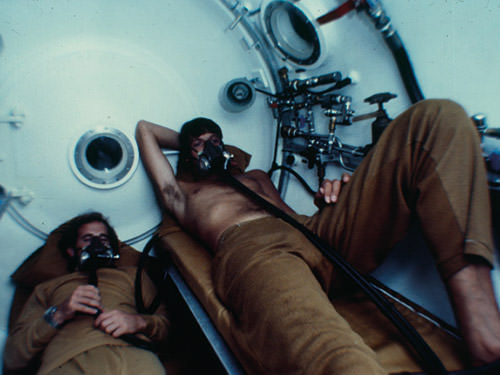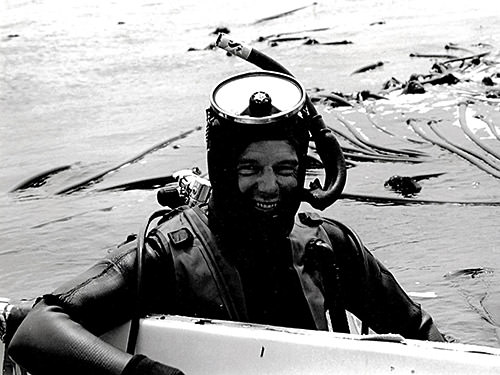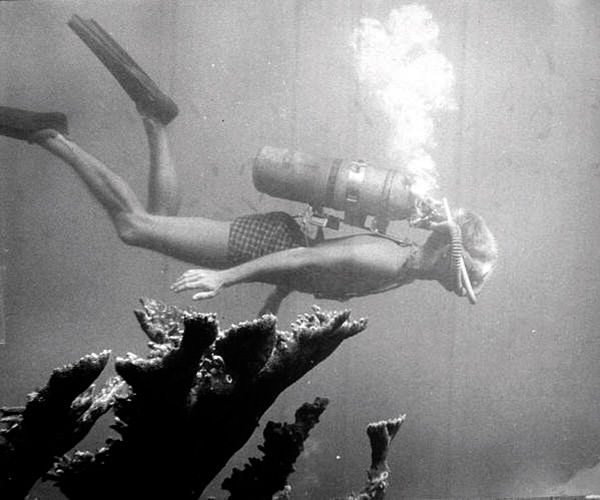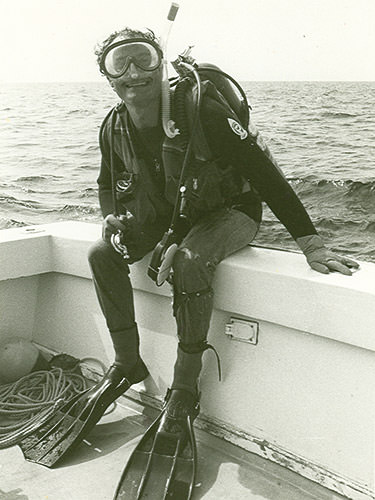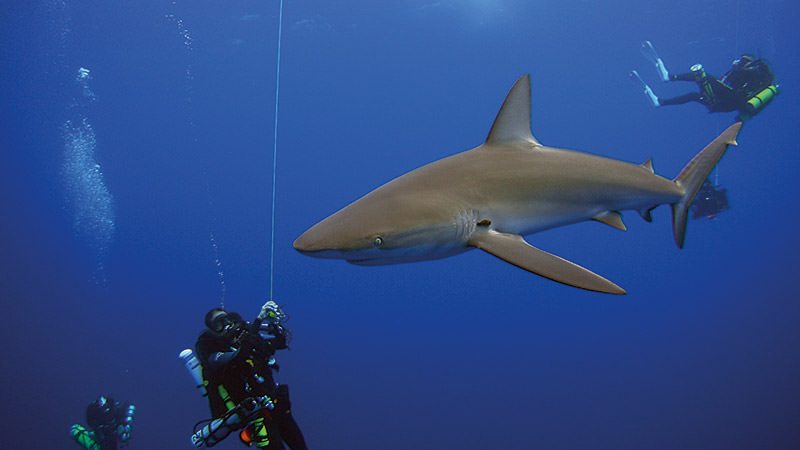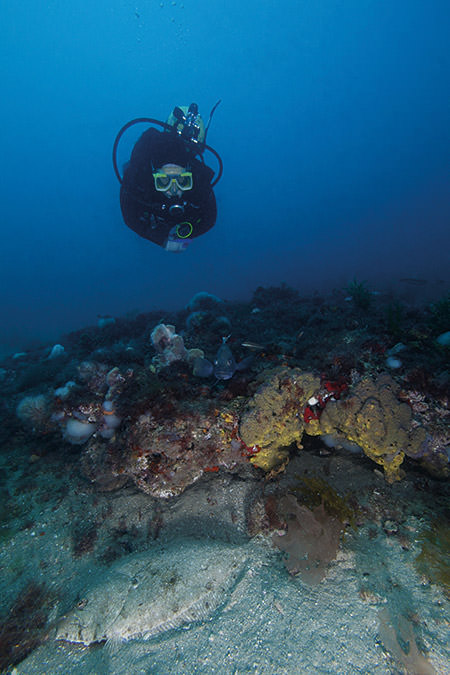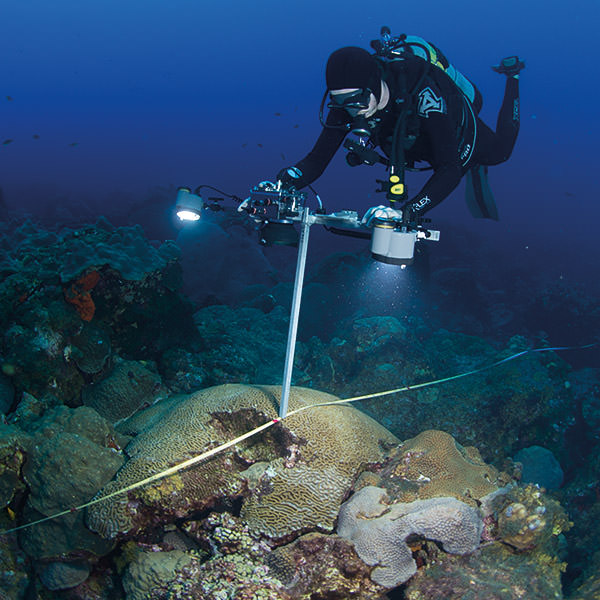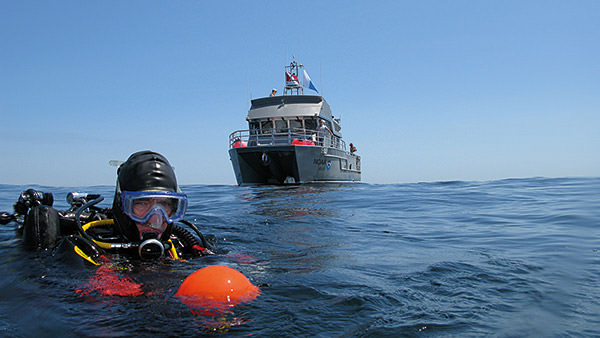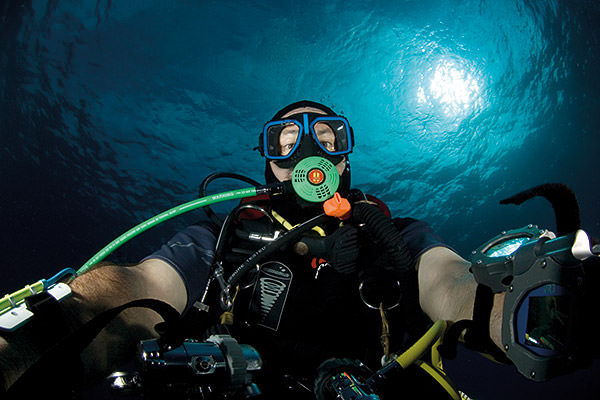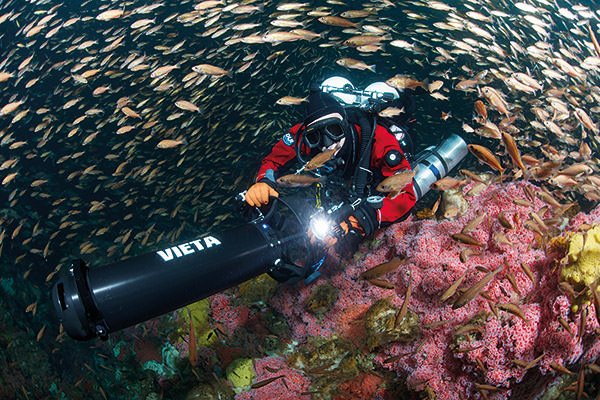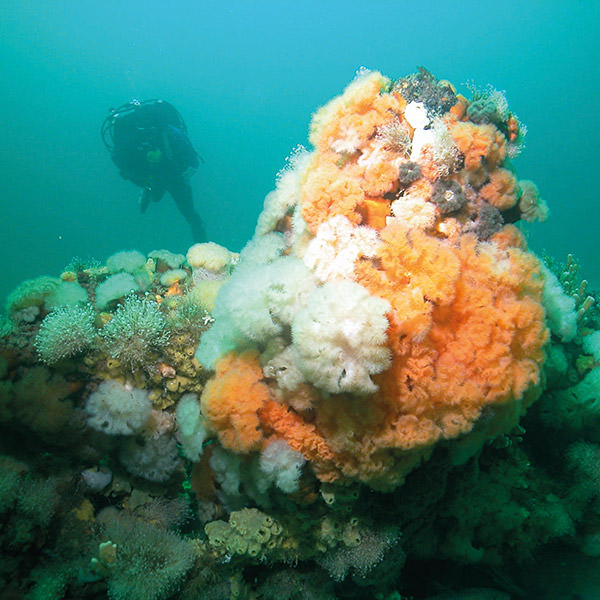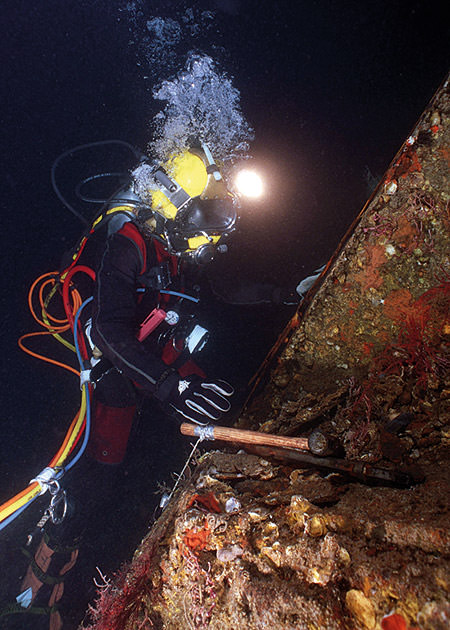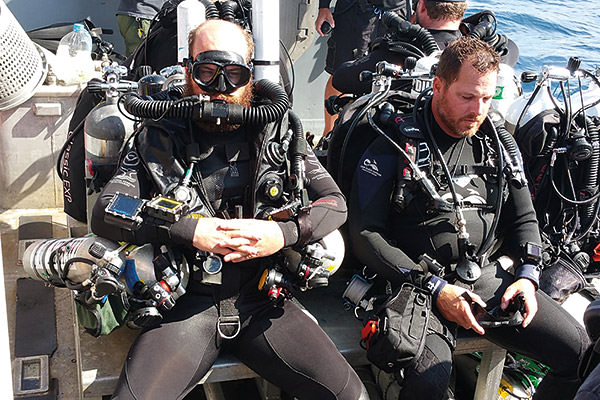Diving as a Tool for Science and Research
The development of scuba equipment opened up the marine world to scientists and adventurers alike. Many of the incredible ecosystems and maritime heritage sites protected by the National Marine Sanctuary System were first explored by divers, who strove to protect these beautiful places. Today, volunteers and NOAA staff rely on scuba equipment to dive deeper and perform critical scientific research to better understand our national marine sanctuaries and marine national monuments.


